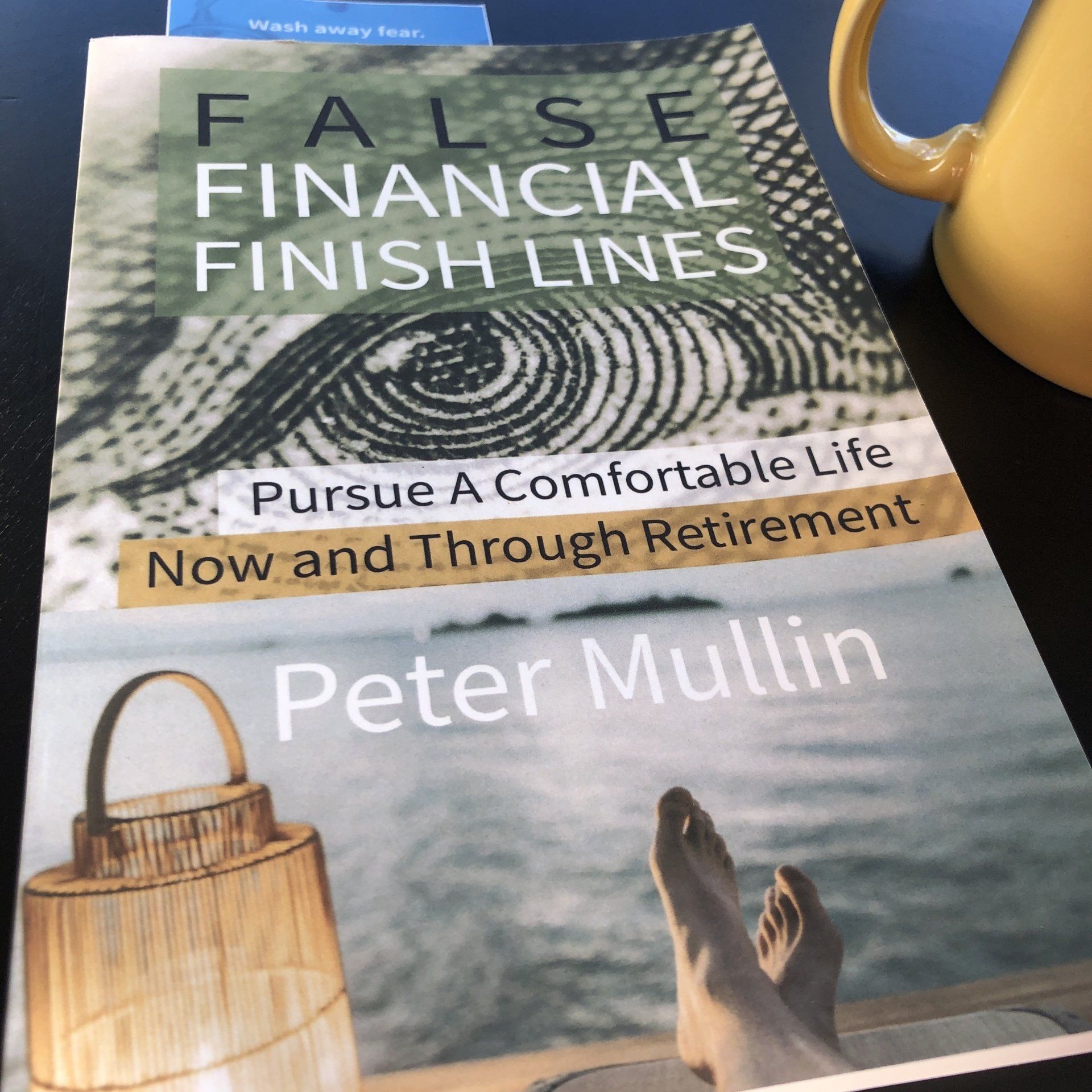Positivity amidst uncertainty - Client Letter
February 24, 2022
Dear Valued Investor,
Stocks have gotten off to a very rocky start in 2022, with the potential for Federal Reserve rate hikes coming and the geopolitical worries over Russia and Ukraine only adding to the uncertainty. We don’t want to minimize the impact of that major geopolitical event, but there is some positive news out there, even though it might not feel like it.
Starting with Russia and Ukraine, the truth is the U.S. economy and the overall stock market likely won’t be impacted much by the recent conflict. In fact, stocks took most previous major geopolitical events in stride. Looking at more than 20 geopolitical events such as the attack on Pearl Harbor and 9/11, the S&P 500 Index fell only about 5% on average.
With anxiety running high, here are some important numbers that should help calm some nerves.
- The S&P 500 Index officially moved into a correction of 10% this week for the first time since March 2020. Since 1950, there has been an average of one 10% correction per year, so some volatility was likely simply due.
- On average, the index sees a peak-to-trough correction of 14% in any given year, and even in up years there is an 11% correction on average.
- After a correction of 10-15%, the index has seen an average one-year gain off the lows of 22% and has gained in 12 of the 13 one-year periods.
- Midterm election years tend to be among the most volatile out of the four-year presidential cycle. In fact, the average midterm year sees a peak-to-trough pullback of 17.1%, but stocks are up more than 30% off the lows on average a year later.
The good news is corporate America continues to see strong earnings. S&P 500 earnings per share in the fourth quarter are tracking to a 31% year-over-year increase (FactSet), roughly 10 percentage points above the consensus estimate when earnings season began. The top-line growth was extremely strong as well, with revenue growth up close to 15%. Lastly, profit margins saw very little compression, as companies with pricing power have been able to pass along higher costs and largely preserve those high margins, which are well above pre-pandemic levels.
Finally, COVID-19 trends are very positive as well, with new cases down more than 90% from the January peak (John Hopkins University). Many states are lifting mask mandates and a strong reopening will likely take place over the coming months and into the summer. Backlogs and bottlenecks continue to slowly trend the right way, and the labor force remains quite healthy as well.
The concerns and uncertainties are real, and the road ahead could be filled with more bumps and bruises. However, with U.S. consumers and businesses in solid shape, we think the U.S. economy could grow as much as 4% this year, much better than the pace of the last recovery.
They say it is always darkest before the dawn, and long-term investors should keep this in mind as better times are likely coming in 2022. Please contact your financial professional with any questions.
Sincerely,
Ryan Detrick
Chief Market Strategist LPL Research
Important Information
This material is for general information only and is not intended to provide specific advice or recommendations for any individual. There is no assurance that the views or strategies discussed are suitable for all investors or will yield positive outcomes. Investing involves risks including possible loss of principal. Any economic forecasts set forth may not develop as predicted and are subject to change.
References to markets, asset classes, and sectors are generally regarding the corresponding market index. Indexes are unmanaged statistical composites and cannot be invested into directly. Index performance is not indicative of the performance of any investment and do not reflect fees, expenses, or sales charges. All performance referenced is historical and is no guarantee of future results.
All data is provided as of February 24, 2022.
Any company names noted herein are for educational purposes only and not an indication of trading intent or a solicitation of their products or services. LPL Financial doesn’t provide research on individual equities.
All index data from FactSet.
This Research material was prepared by LPL Financial, LLC. All information is believed to be from reliable sources; however LPL Financial makes no representation as to its completeness or accuracy.
- Mullin's take on the "4% Retirement Rule"
- Navigate "Bad Portfolio Weather"
- Tips to Optimize Social Security







Articles and Assets
What are your Priorities?
Well it’s the end of the year. I just searched on Google for “market outlook 2018.” I came up with a little over 58-million “results.”
So should you be investing in stocks in 2018? The quick answer: It’s likely a prudent part of your portfolio. But it depends on your circumstances, right?
It’s apparently popular to throw your hat in the ring.
A mantra that you hear among disciplined professionals is to “stay the course.”
Then you hear “sell high, buy low.”
Who’s right?
The relief of a disciplined strategy is that it can be tailored to you. And tailor we think you should.
Yes, it’s possible that an investor may not utilize stocks in their portfolio at all. Or you may decide to go “all in” with a diversified stock portfolio.
(Side effects from tailoring a strategy may include increased confidence & persistence, apathy toward daily market reports, and increased focus on what really matters.)
Let’s begin with the “Why” of investing for you. Then you can request 15-minutes on the phone discuss your “how.”
So “Why Should You Invest”
Life changes and our “why” of investing ought to transform with life. Some invest for sport – they like the risk/reward of investing – they’re in it for the thrill. I don’t hang with this crowd.
Most of us ought to invest for things we want. Our money & our goals are serious. By investing in a diversified portfolio we can pursue things we want.
1. Living A Comfortable Retirement: Retirement is a noun. It’s up to you to really design and live a retirement that reflects you.
2. Purchasing a Home: Home is a place to live. It can take a down payment.
3. Passing an Inheritance on to Family:
4. Student Loan Shield: This idea is important for many Millennial graduates. Student loans can dominate your budget. But instead of accelerating those payments, what if you paid your required payments, and then invested the additional money that you were going to pay against your loan balance?
5. Emergency Reserves: You probably have read that it’s prudent to keep a relative healthy amount of cash in your checking/savings. Once you’ve achieved that, then you can consider investing additional funds. Go a step further and consider a non-retirement account for you and your house. You can spend this on cars, vacations or use it just as described in #4.
The Dow Jones has seen positive results, so far, in 2017. It’s unusual and sort of uncomfortable as the independent financial advisor. Why is it uncomfortable?
What would sting & linger longer? Finding $20 in the parking lot? Or finding a $20 parking fine on your windshield?
We’ve been finding a lot of metaphorical “$20’s” (i.e. “positive results”) in our portfolios this year. So the second we find a parking fine (or a few in a row) we’ll be sure to ask if stocks are still the right place to park our money.
Complacency can work against us, Dear Clients. Just keep recalling your long-haul strategy and your “why” of investing.
***
Peter Mullin is an independent financial advisor registered through LPL Financial. He lives in Rogers, MN with his family. He was born and raised in St. Cloud, MN. Mullin Wealth Management is located in Waite Park, MN.
The opinions voiced in this material are for general information only and are not intended to provide specific advice or recommendations for any individual.
Investing involves risk including loss of principal.
There is no guarantee that a diversified portfolio will enhance overall returns or outperform a non-diversified portfolio. Diversification does not protect against market risk.
All performance referenced is historical and is no guarantee of future results.
All indices are unmanaged and may not be invested into directly. No strategy assures success or protects against loss.







